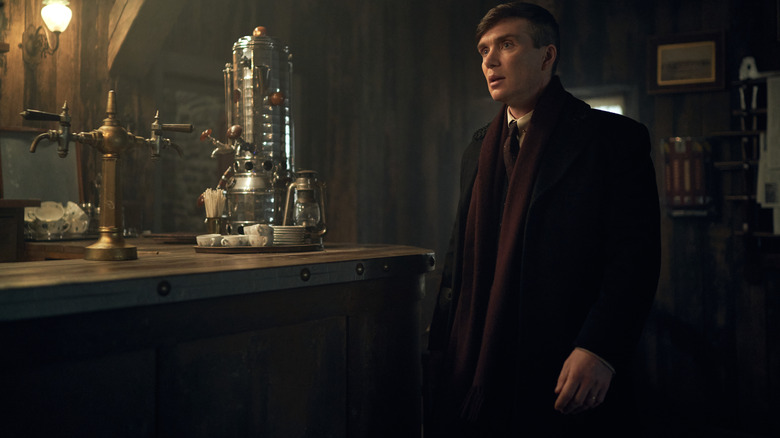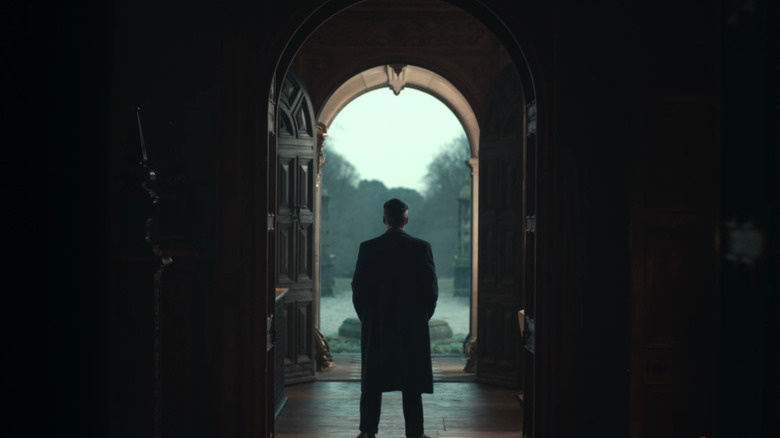How Steven Knight Used A Peaky Blinders Setting To Mirror Tommy's Rise
Any prestige television series worth its salt will constantly challenge its viewers to consider the story being told beyond the story — in other words, what's going on underneath surface-level aspects, such as dialogue and plot. The all-time greats like "The Wire," "The Sopranos," and "Mad Men" all made time and space to explore the subtext going on within any given scene or exchange between characters, rewarding observant viewers who paid attention to the little details.
Creator Steven Knight and the rest of the "Peaky Blinders" team certainly aspire to have their now-completed series (you can read Joshua Meyer's review of the sixth and final season for /Film here) stand amongst the classics of the medium, partly by focusing so intensely on the psychology of damaged figures like Cillian Murphy's Tommy Shelby. As the leader of the Blinders with an insatiable thirst for more power and security, the series has seen him rise from a low-level gangster fixing local horse races to becoming a political powerhouse within the halls of Parliament itself. That ascension came as a result of the show's many unexpected twists and turns, no doubt, but the most rewarding aspect comes from tracking the visual storytelling that has accompanied this journey.
Take the gaudy mansion that Tommy moves into during season 3 and ultimately destroys in a cathartic blaze of glory by the finale of season 6, for example. According to Knight, this location was meant to reflect Shelby's own arc and internal conflict in some cleverly effective ways.
'You never felt Tommy was at peace in that house'
Choose to set any story in the smog-choked world of early 1900s England and you're inevitably going to have to tackle uncomfortable issues of British aristocracy, the rise of fascism, and the lingering consequences of colonialism. "Peaky Blinders," to its credit, has addressed all this and more throughout the course of its six seasons, but perhaps never more effectively than through Tommy's tumultuous rise to power. In a 2017 interview with Den of Geek, Steven Knight addressed how he used one memorable and oft-used location — the Shelby estate — to communicate subtle ideas about the crime lord's mental state:
"What I wanted to do was reflect on the idea that those big stately homes, when they were first built by people in the fifteenth or sixteenth century, they were usually built by pretty much criminals who had done pretty bad things in order to get their knighthoods and their land from the king ... They're actually built on blood."
It's not a terribly huge leap to connect the dots between Britain's blood-soaked history and the horrific things Tommy did to claw his way to the top. According to Knight, the parallels were intentional.
"Tommy does exactly that. He's built his empire on violence and blood ... but just as with the existing aristocracy, that symmetry and order that you're talking about, which is absolutely right, in the house and the architecture, even then was never mirrored by any sort of balance and symmetry within aristocratic families, famous as they were. The chaos is... you never felt Tommy was at peace in that house."
"Peaky Blinders" has never once shied away from delving right into Tommy's troubled head and we can expect that to continue in the feature film spin-off.

